There are more than 37,000 known shipwrecks in England’s water, and thousands more around the Scottish, Welsh and Irish coast. Yet only 57 in England, and precious few in Scotland and Wales, are legally protected for historical, artistic or archaeological importance (Allen, 2021). Wrecks are threatened by natural forces and commercial exploitation of the sea and seabed, and their study and protection presents challenges given the difficult access to the underwater environment. Volunteer Benita Yue looks into the relationship between heritage and marine conservation and how these two co-exist under the surface.
Wrecks As Artificial Reefs
Shipwrecks can become marine life havens supporting a high biodiversity of fish, invertebrates and algae. The hard substrate wrecks provide create shelter and refuges for species at larval, juvenile and adult stages (Firth, 2018), establishing its own ecosystem. Microorganisms such as bacteria from the surrounding environment are amongst the first to colonise, forming a foundation of biofilm which is attractive to the settlement of planktonic larvae of benthic reef fauna such as algae, anemones and sponges. These will in turn attract more mobile fauna such as crabs, lobster and fish looking for food and places to hide (Damour et al, 2015).
The ex-Royal Navy Frigate HMS Scylla was sunk purposefully in 2004 off the Cornwall coast, and provides an excellent example of how a shipwreck can provide a complex marine habitat over time. Barnacles, tubeworms and hydroids settled within a month, with sea urchin, queen scallop, ascidians, sea stars and ephemeral algae discovered in the first year. Two commonly seen species on British wrecks, the plumose anemone and dead man’s fingers, a type of soft coral, were also early colonisers. Wrasse and sea fans established after a few years, bringing the number of species to 263 by 2009 (Hiscock et al., 2010). Research has also shown the habitat to be unique to certain species of sponges not found on natural reefs.
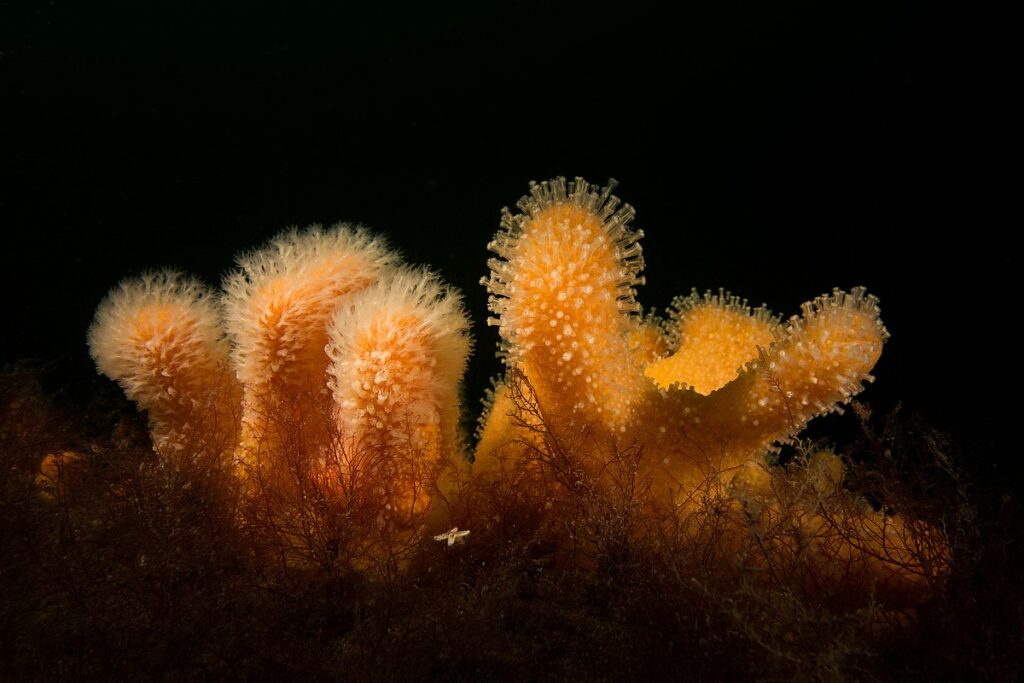
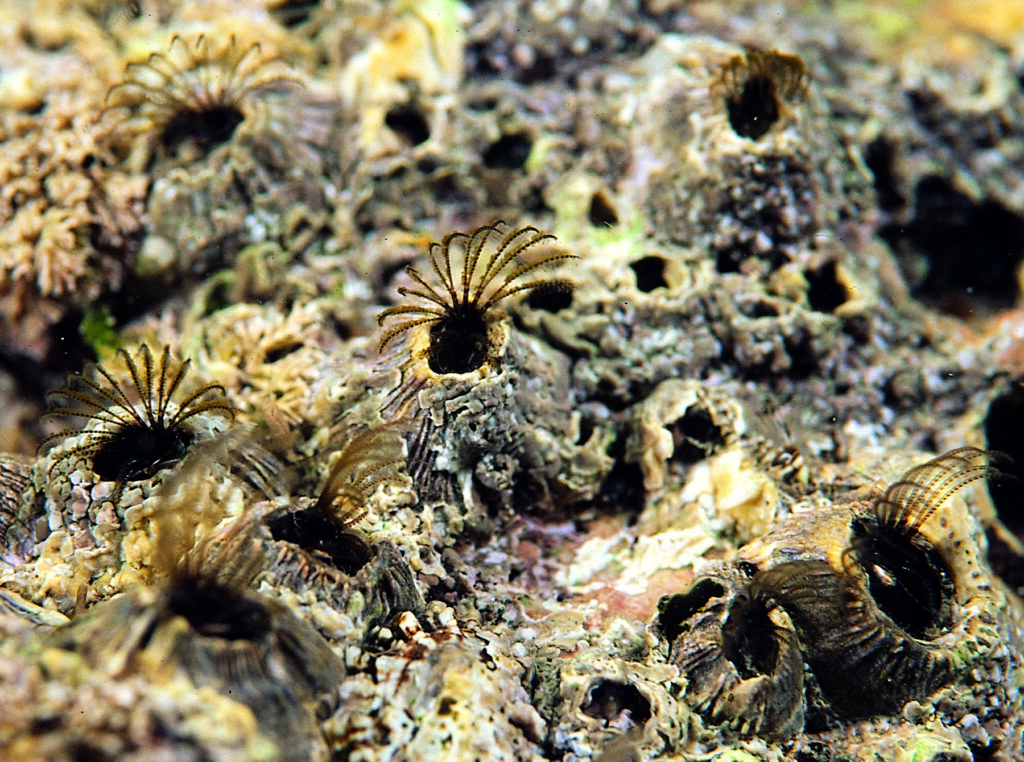
Figure 2: Barnacles (Perforatus perforatus), included with kind permission from author: Paul Naylor, website: Marine Photo , book ‘Great British Marine Animals’ available at: Great British Marine Animals | NHBS Field Guides & Natural History.
The area surrounding the Lundy Islands is rich with wrecks, including PS Iona II, HMS Montagu and MV Robert. Among the conger eels, lobster, wrasse, bib and plumose anemone, communities of horseshoe worms growing around MV Robert’s limestone cannonballs are distinctive to this area (Robertson & Heath, 1997).
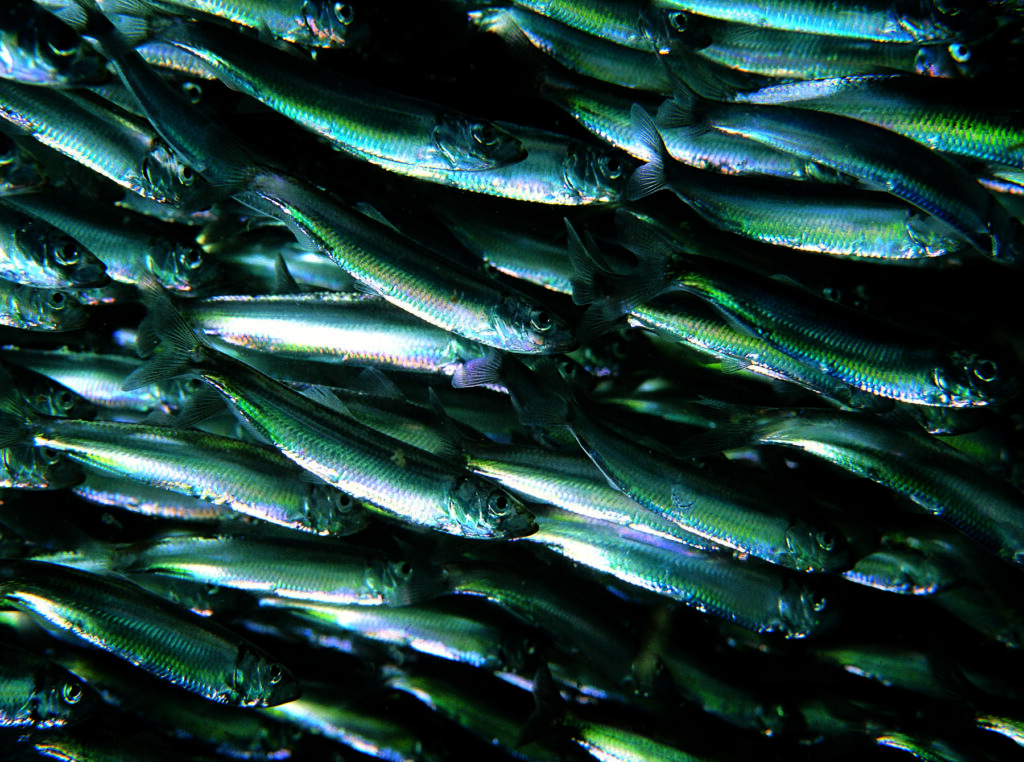
Figure 3: Shoal of sprat fish, included with kind permission from author: Paul Naylor, website: Marine Photo , book ‘Great British Marine Animals’ available at: Great British Marine Animals | NHBS Field Guides & Natural History
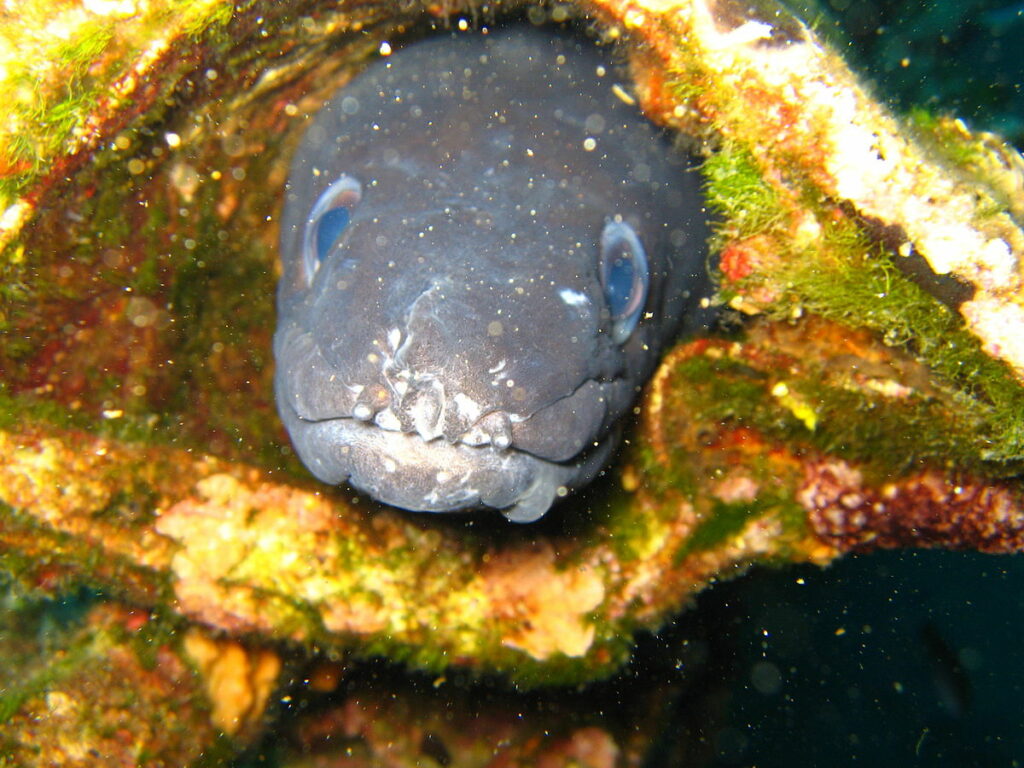
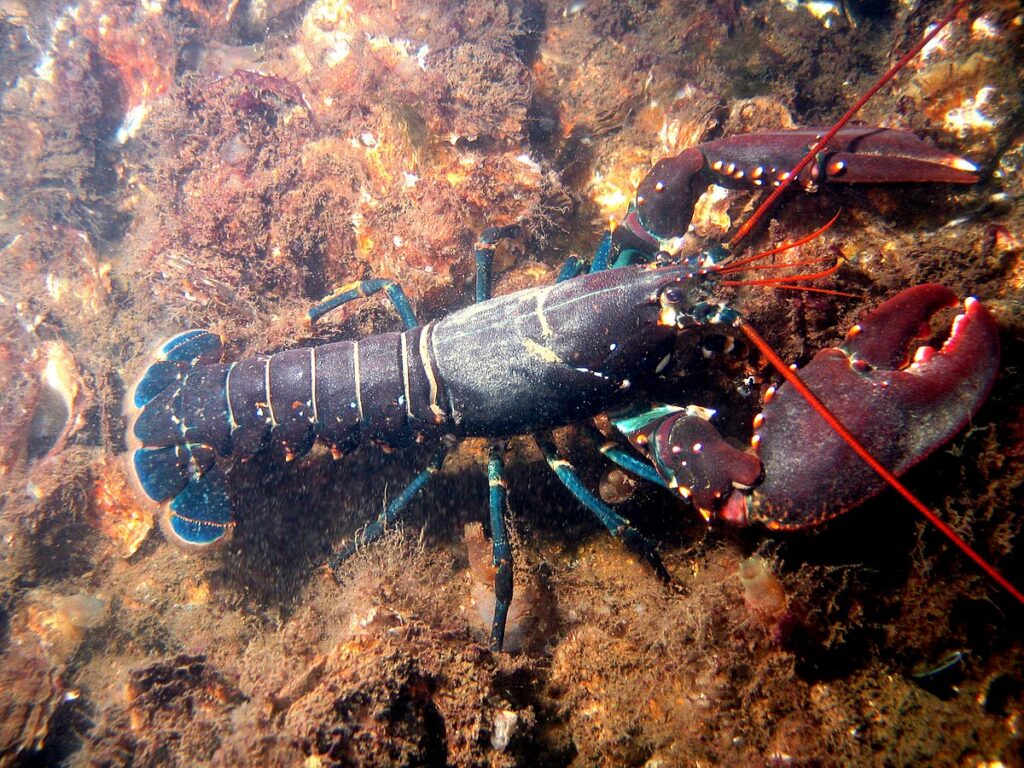
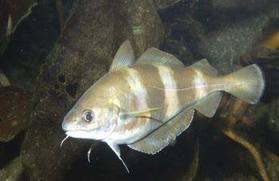
Figure 6: Bib (Trisoperus luscus), Author: Maritime Archaeology Trust
Wrecks At Risk
Some organisms are a threat to the historic value of some shipwrecks. Older shipwrecks built of wood provide an abundant food source for marine boring organisms, and some bacteria and fungi. Erosion bacteria is tolerant to the low oxygen environments found in the deep sea, slowly eroding the wood’s surface layers, and working inwards (Jurgens & Blanchette,1991). In more oxygenated conditions, tunnelling bacteria, soft rot decay by fungi, and bacterial degradation can contribute to further deterioration, albeit at a much slower rate than marine borers (Bjordal & Nilsson, 2008).
The activity of marine borers may be limited by low temperatures and oxygen availability, but the damage they can inflict is far greater. Ancient mariners knew all too well of the central role played by marine borers, especially shipworms, in ship degradation (Palma & Santhakumaran, 2014). Shipworms (Teredinidae), not worms at all, are molluscan bivalves, which enter the wood at their larval stage, growing elongated to a worm-like body in a burrow within the wood. At one end of the burrow is an opening to the outside water, protected by a trapdoor closure, which allows their siphons to operate for breathing and excretion. The other end has a muscular foot to keep the shipworm’s body in place, and two shell valves with serrated edges, which rotate to scour off wood as the organism moves forwards, gradually tunneling through the wood (Palma & Santhakumaran, 2014). Whilst the wood on the outside may look intact, extensive honeycomb-like tunnels can be found internally. The shipworm secretes a substance to protect it from harmful chemicals in the wood. Teredo navalis is perhaps the most well-known shipworm species, widespread in the UK, Europe and North America. With a growth rate of 0.5 – 1 mm per day in temperate waters, a 20 cm long piece of wood would be completely consumed by Teredo navalis within a year (Manders, 2011). Shipworms are responsible for extensive damage to well-known wrecks such as the Mary Rose, and led to the early retrieval of significant archaeological parts of the Swash Channel Wreck, before it succumbs to degradation.
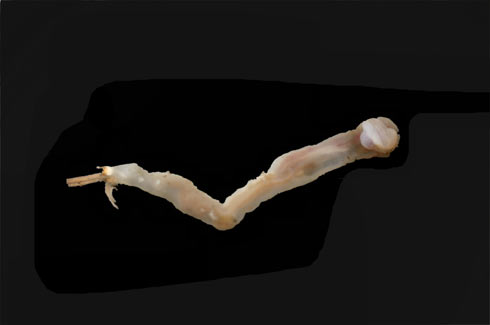
Figure 7: Shipworm, Author: Maritime Archaeology Trust
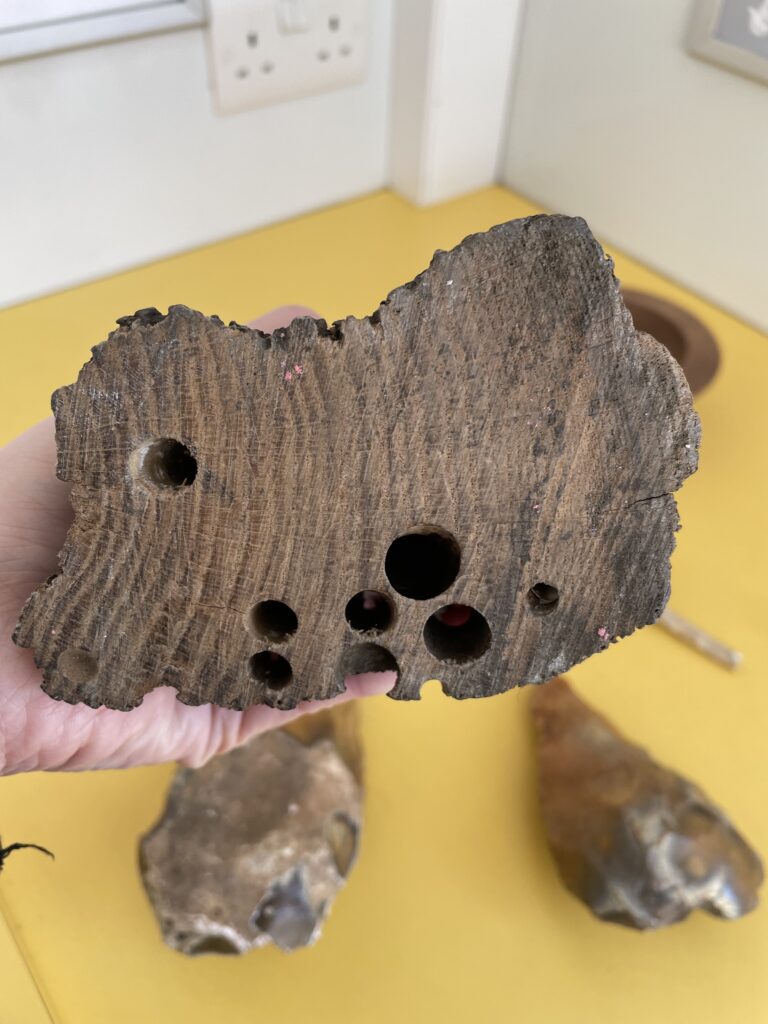
Figure 8: Shipworm holes made in timber, this artefact can be found on the MAT Discovery Bus, Author: Maritime Archaeology Trust
The other major group of wood borers found on UK shipwrecks are the Limnoriidae, or Gribble, a group of woodlouse-like crustaceans, which burrow just below the wood surface. They create a superficial branching lace like pattern, which is more detectable than shipworm damage (Palma & Santhakumaran, 2014). Gribble are spread through infested wood, as they have limited swimming ability. Though more limited in distribution to the planktonic larvae of shipworm, gribble can also inflict severe damage.
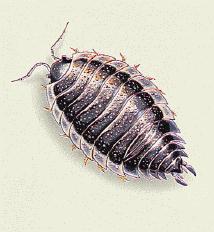
Figure 9: Gribble, Author: Maritime Archaeology Trust
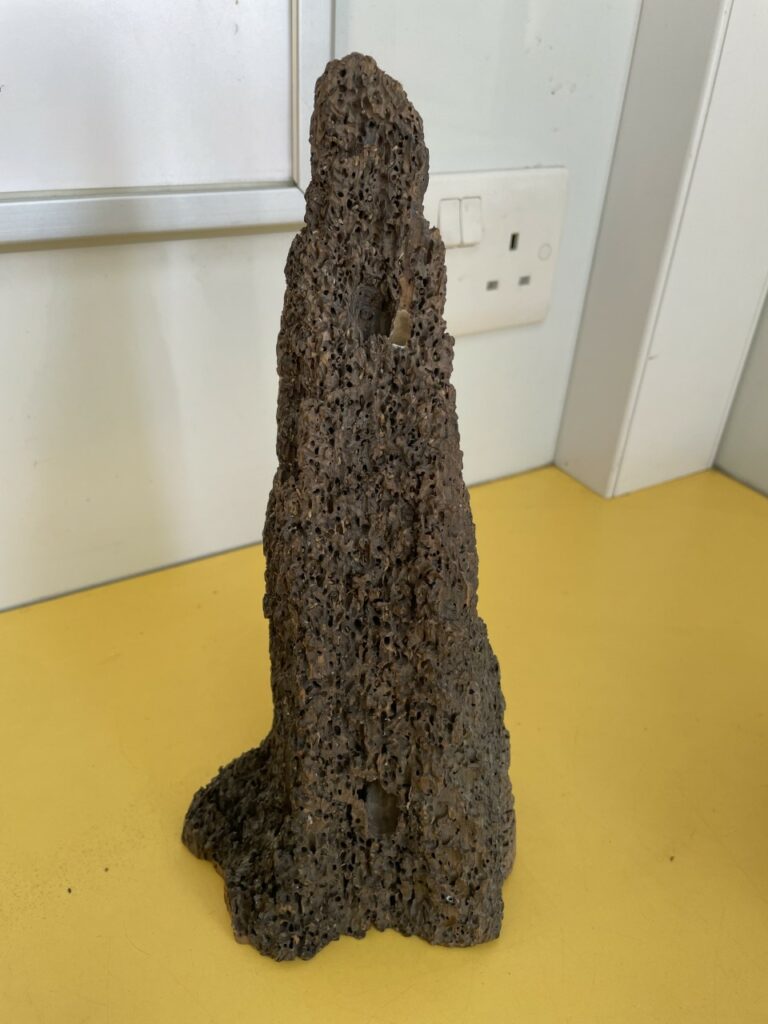
Figure 10: Gribble tunnelling, Author: Maritime Archaeology Trust
There is growing evidence that warming waters and currents may create favourable conditions for boring activity, and bring in non-native marine species such as Lyrodus pedicellatus (another shipworm species), intensifying wood degradation of shipwrecks (Palma & Santhakumaran, 2014). There is also indication that shipwrecks may provide stepping stone habitats for invasive species. The invasive hard coral species Tubastraea tagusensis, native to the Galapagos, has been found growing on a WWII shipwreck in the Atlantic, and will displace native benthic species (Soares et al., 2020). The migration of invasive species could potentially have large scale ecosystem implications. Equally, shipwrecks may provide pathways for species, vulnerable to extinction, to colonise other areas.
Wrecks Creating Risk The potential long term environmental impact of shipwrecks has frequently been overlooked. From WWI onwards many ships were fuelled by oil, and carried large volumes in their holds. Seawater gradually corrodes the metal components of ships, such as their ferrous hulls and metal boilers, leading to eventual collapse, and releasing vast amounts of stored oil into the water (Firth, 2018). It is estimated over 8000 wrecks worldwide threaten to release their stored oil (Williams, 2019). Even small continuous releases of oil can affect growth, cardiovascular, immune function, respiration and reproduction systems of marine organisms (Landquist, 2013). Heavy metals, including copper, nickel, mercury, cadmium, arsenic and chromium were used to strengthen ships and as they erode slowly leach into the water and sediments (Allen, 2021). Their effects are unclear, but these
substances are believed to bioaccumulate at higher trophic levels such as in marine mammals. Mercury and cadmium has been shown to be toxic to bivalve molluscs such as barnacles, and chromium has been linked to poor reproductive capacity in whales 8. Although more recently used, Persistent Organic Pollutants (POPs), especially Polychlorinated biphenyls (PCBs) used as fire retardants on naval ships, and Tributyltin (TBT) in anti-fouling paints found on ship hulls, may be toxic to marine organisms. The use of PCBs and TBT have been banned, but continue to harm marine organisms as they do not breakdown easily. Many WWI and WWI wrecks bring the additional risk of carrying numerous unexploded mines and bombs aboard, creating environmental and public risk as the ships degrade (Firth, 2018).
The ecological and heritage value of shipwrecks attract divers, sea anglers and commercial fishers. Fishing gear has helped to uncover numerous artefacts from shipwrecks, but also snags easily on wreck structures, creating a hazard to both other water users and marine life (Firth, 2018). Shipwrecks may also become accumulation points for rubbish, for example the HMS Invincible off Portsmouth Harbour was found full of plastic waste and drink cans (BBC, 2018).
Heritage and Marine Conservation
The recognition of the potential value of shipwrecks in the UK from a nature conservation perspective has been criticised as being underdeveloped (Firth, 2018). Some location specific wrecks such as HMS Scylla have been well researched, and there are more plans to sink wrecks as artificial reefs. The biodiversity of wrecks in Scapa Flow in the Orkney Islands has been recognised and protected through heritage legislation, and is thought to contribute to the presence of horse mussel beds, which are a Priority Marine Feature for nature conservation (Firth, 2018). Many Marine Protected Areas will include wreck locations, for example, the Lundy Island Marine Conservation Zone is estimated to be home to over 200 wrecks including HMS Montagu and The South Australian (Robertson & Heath, 1997).
Both marine archaeology and conservation are affected by the use of the marine environment such as mining and fishing, so it would make sense to encourage cooperation between them to help ensure the future of the marine environment. Archaeology may also help communicate important messages about sustainable use of our oceans in the past, and in the future (Trakadas, 2022). Maritime and Underwater Cultural Heritage (MUCH) is concerned with the relationship between people and the marine and coastal environment over time, using tools such as archaeology to investigate how the ocean was used through historical maritime artefacts. Under the United Nations Decade of Ocean Science for Sustainable Development 2021-2030 initiative, the Ocean Decade Heritage Network (ODHN) was established, made up of professional cultural heritage managers and archaeologists who support interdisciplinary research in the marine sciences (Trakadas, 2022). Another example of how maritime archaeology can work in conjunction with coastal conservation is event in the trust’s project SARCC, which examines how to deploy nature-based solutions as flood defences.
Historical shipwrecks not only provide valuable insights into our history and relationship with the sea, but can create marine life refuges and unique habitats. Their degradation is vulnerable to many factors, some out of our control, and their deterioration does bring with it some pollution hazards. Collaboration between heritage and marine science interests is developing to help address the challenges facing our shipwrecks and oceans.
